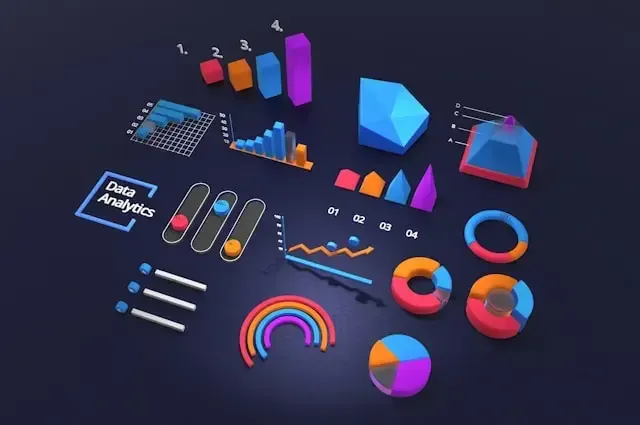Unlock the secrets of effective communication with our comprehensive guide. Delve into neuroscience, explore verbal and non-verbal techniques, and discover practical strategies for conflict resolution and digital interactions. Elevate your personal and professional relationships by mastering the art of clear, concise, and empathetic communication.
Introduction
Communication in fact is the accurate and intentional passing of information from the sender to the receiver. Thus, it cannot be a simple process of verbal interaction but a process implying traits like nonverbal communication, emotional intelligence, and attentive listening. The purpose of each interlocutor is to understand the other party and establish an efficient communication.
Interpersonal communication is an essential skill in one’s lifetime both in the workplace and in society. In interpersonal situations it improve interaction, negates the conflict and establishes meaningful bonds. In a professional perspective, it creates avenues for employees’ upward mobility, encourages teamwork and productivity in organizations. GCE affects behaviour in everyday life since communication forms the basis of any interaction and relationships.
The goals of this type of article are to present practical solutions for better communication backed by the data of neuropsychology, examples of actual interactions, and tips depending on the type of the connections and the digital environment.
Interpersonal communication is an essential skill in one’s lifetime both in the workplace and in society. In interpersonal situations it improve interaction, negates the conflict and establishes meaningful bonds. In a professional perspective, it creates avenues for employees’ upward mobility, encourages teamwork and productivity in organizations. GCE affects behaviour in everyday life since communication forms the basis of any interaction and relationships.
The goals of this type of article are to present practical solutions for better communication backed by the data of neuropsychology, examples of actual interactions, and tips depending on the type of the connections and the digital environment.
The Neuroscience Behind Connection
These are cells in the brain that activity when an individual is carrying out an action and also when they are watching another person conduct the same action. It also enables people to learn about emotions and actions of others, which is of great help influencing, especially in the sphere of sociocommunication where it helps to state how people feel and what they think.
The neuropeptide oxytocin has been called the ‘‘love hormone’’, because it unites two people and makes them trust each other. Launched at the time when individuals are close to each other and experience positive feelings, oxytocin helps in forming new bonds and building trust, the essentials of the communication process.
Emotional contagion is defined as a process where an individual’s feelings, and corresponding behaviors influence the feelings and behaviors of other individuals. This spread of emotions happens unconsciously and any of it may disturb the group processes and interpersonal communication greatly and therefore the emotional intelligence of the communicators.
Components of Effective Communication
1. Verbal Communication
- Active Listening- Active listening is the listening process where one comprehends, reacts and memorizes to what is being communicated. Such strategies include head bobbing, restatement, and questioning, which illustrate attentiveness and acknowledgement of the other person’s point of view.
- Assertive Outcome-Assertive communication is honest and considerate of other people it is the healthiest form of communication. It refers to the ability to freely give and willingly receive information about oneself, with respect to other people’s feelings.
- Audience- Clarity and Conciseness: One has to ensure what he or she says is clear and straight to the point so as to avoid misunderstandings. This implies saying what is on the mind without complexity or in other words, saying what is on one’s mind without any twist right, and thereby achieving the intended purpose of passing across the information.
2. Non-Verbal Communication
- KB –00 Posture and movement on one’s part together with gestures and facial expressions often provide the audience with rich content that may defeat the purpose of spoken words. Proper utilization of body language highly improves the interaction of spoken communication.
- Touch- Touch is of the signal systems used in interpersonal communication and increases control and confidence. They assist in the management of turn taking and also demonstrate to the speaker that you are attentive and keen.
- Space - Space is one of the aspects of grant that falls under the social component and it encompasses the use of space when communicating. The issue of space, or more specifically the lack of it, as well as aspects of cultural sensitivity are also crucial in making the interaction less stressful and more productive.
3. Emotional Intelligence
- Self-Awareness – Self-awareness means awareness of one’s own feelings; this is important in interpersonal communication. It assists people in regulating their reactions and be themselves when interacting with others.
- Empathy-It is the ability to feel as the other person feels or understanding of the other’s feelings. They bring cooperation and empathy into people relationships, which consequently results in more efficient and warm communication.
- Emotional regulation-In this aspect, it is important to understand how to control one’s emotions, especially when dealing with people in that recorded communication . Self control plays a role to avoid responding in anger and influencing constructive behaviour rather than a rash one.
- Active Listening- Active listening is the listening process where one comprehends, reacts and memorizes to what is being communicated. Such strategies include head bobbing, restatement, and questioning, which illustrate attentiveness and acknowledgement of the other person’s point of view.
- Assertive Outcome-Assertive communication is honest and considerate of other people it is the healthiest form of communication. It refers to the ability to freely give and willingly receive information about oneself, with respect to other people’s feelings.
- Audience- Clarity and Conciseness: One has to ensure what he or she says is clear and straight to the point so as to avoid misunderstandings. This implies saying what is on the mind without complexity or in other words, saying what is on one’s mind without any twist right, and thereby achieving the intended purpose of passing across the information.
2. Non-Verbal Communication
- KB –00 Posture and movement on one’s part together with gestures and facial expressions often provide the audience with rich content that may defeat the purpose of spoken words. Proper utilization of body language highly improves the interaction of spoken communication.
- Touch- Touch is of the signal systems used in interpersonal communication and increases control and confidence. They assist in the management of turn taking and also demonstrate to the speaker that you are attentive and keen.
- Space - Space is one of the aspects of grant that falls under the social component and it encompasses the use of space when communicating. The issue of space, or more specifically the lack of it, as well as aspects of cultural sensitivity are also crucial in making the interaction less stressful and more productive.
3. Emotional Intelligence
- Self-Awareness – Self-awareness means awareness of one’s own feelings; this is important in interpersonal communication. It assists people in regulating their reactions and be themselves when interacting with others.
- Empathy-It is the ability to feel as the other person feels or understanding of the other’s feelings. They bring cooperation and empathy into people relationships, which consequently results in more efficient and warm communication.
- Emotional regulation-In this aspect, it is important to understand how to control one’s emotions, especially when dealing with people in that recorded communication . Self control plays a role to avoid responding in anger and influencing constructive behaviour rather than a rash one.
Real-Life Examples
Managing Disputes with a Partner-This is because through communication, all the disagreements that that may be existing are addressed calmly with the partner. For instance, replacing the assertive language with the perceiving components of the interactions such as ‘I feel’ instead of ‘You should’ can enable the partners to share their personal feelings with the issues without escalating the blame game and help them find other more constructive solutions.
The Dynamics of Communication- In the workplace, one can be able to work on features such as working on group projects from the team or even to be able to solve a conflict with the colleagues. By listening actively and giving constructive feedback one is likely to improve on teamwork and productivity.
The maintainance of family relationship-Many a times people need to get closer to their families and this mainly requires the ability to listen and comprehend. Further, family members should learn how to express their feelings and listen to other’s feelings in order to prevent conflicts and guarantee that each of them is important to the others.
The Dynamics of Communication- In the workplace, one can be able to work on features such as working on group projects from the team or even to be able to solve a conflict with the colleagues. By listening actively and giving constructive feedback one is likely to improve on teamwork and productivity.
The maintainance of family relationship-Many a times people need to get closer to their families and this mainly requires the ability to listen and comprehend. Further, family members should learn how to express their feelings and listen to other’s feelings in order to prevent conflicts and guarantee that each of them is important to the others.
Conflict Resolution Strategies
In conflict management there is; Active Listening – Active listening helps in ensuring that all the parties involved have been understood. When putting in one’s own words and acknowledging what has been said, listeners avoid misinterpretations, and a positive communication is set up.
I-Statements-Using "I-statements" allows individuals to express their feelings and needs without blaming others. This technique promotes constructive conversation by focusing on personal experiences and reducing defensiveness, facilitating mutual understanding and problem-solving.
Win-Win Solutions- Seeking win-win solutions involves finding outcomes that satisfy all parties involved. This approach encourages collaboration and creativity in problem-solving, ensuring that conflicts are resolved in a way that respects everyone’s needs and interests.
Communication in Specific Relationships
1.Romantic Relationships
- Love Languages-Understanding and speaking your partner’s love language can significantly enhance communication. Tailoring communication to show love and appreciation in the way your partner values most fosters emotional intimacy and strengthens the relationship.
- Emotional Intimacy-Building emotional intimacy requires open and honest communication about feelings, desires, and fears. Trust and vulnerability are key components, which can be nurtured through active listening and empathetic responses.
2.Family Dynamics
- Parent-Child Communication-Effective communication with children involves active listening, empathy, and clear guidance. Creating a safe and open environment encourages children to express themselves and fosters strong, trusting relationships.
- Sibling Relationships-Communication between siblings can be improved through conflict resolution techniques and open dialogue. Encouraging siblings to express their feelings and work together to solve problems builds a cooperative and supportive relationship.
3.Workplace Communication
- Effective Meetings-Clear agendas, active participation, and respectful dialogue are essential for productive meetings. Ensuring that everyone has a chance to speak and that discussions stay on track can make meetings more efficient and effective.
- Feedback and Collaboration-Constructive feedback and open collaboration are vital for a positive workplace environment. Encouraging open communication and valuing diverse perspectives enhance teamwork and innovation.
Digital Communication
Email Etiquette-Effective email communication requires clarity, a respectful tone, and brevity. Clear subject lines, concise content, and appropriate language ensure that emails are understood and convey the intended message without ambiguity.
Virtual Meetings-Engaging participants in virtual meetings involves clear agendas, interactive elements, and active facilitation. Using visual aids, encouraging participation, and maintaining eye contact through the camera can enhance engagement and communication effectiveness.
Social Media-Balancing authenticity and professionalism on social media is crucial for personal and professional branding. Being genuine while maintaining a respectful and professional tone helps build a positive
presence and fosters meaningful connections.
Continuous Growth and Improvement
Lifelong Learning-Communication is an evolving skill that requires ongoing effort and learning. Encouraging readers to continuously seek out new strategies, reflect on their interactions, and adapt their communication styles fosters personal and professional growth.
Practice Exercises-Interactive activities, such as role-playing, journaling, and group discussions, can reinforce communication skills. These exercises provide practical experience, allowing individuals to apply techniques and receive feedback in a supportive environment.
Conclusion
In conclusion, mastering effective communication can transform personal and professional relationships, fostering understanding, cooperation, and trust. By implementing the practical strategies discussed, individuals can enhance their communication skills, leading to more meaningful and productive interactions. The journey towards better communication is continuous, but its rewards are profound and far-reaching.


























